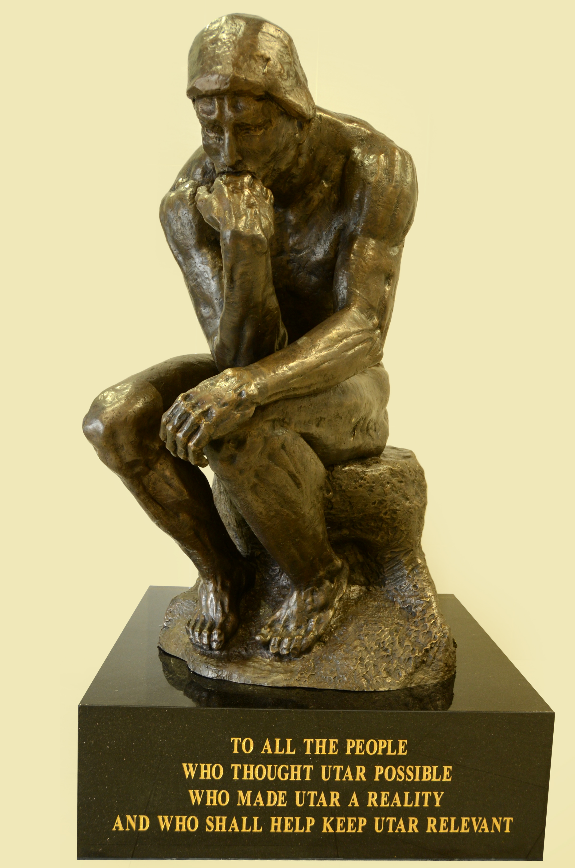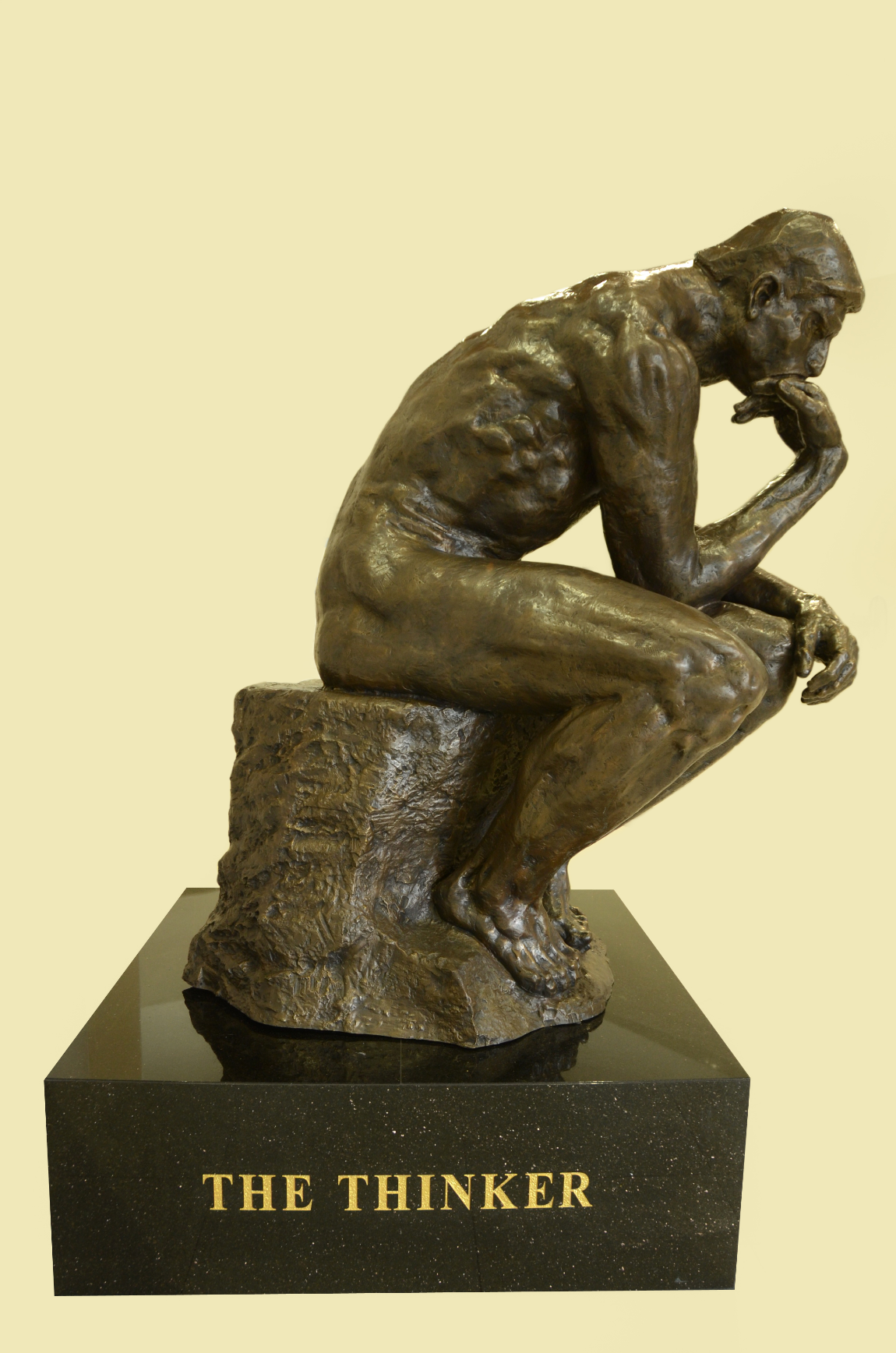

A stand-alone sculpture, The Thinker
《沉思者》雕塑
The ThinkerThe great 19th century sculptor, Auguste Rodin, guided the field of sculpture into the modern world with a realistic style grounded in Renaissance art. Following his idea of art as emotion, Rodin created forms and poses that expressed inner feelings and spirit. The work was originally one of the many figures on his doorway sculpture titled The Gates of Hell, and represents Dante Alighieri’s thoughts over the worldly sin and the tragedy of mankind in the hell in his epic poem Divine Comedy. In 1888 Rodin made The Thinker as a stand-alone sculpture, and had enlarged version made in marble and plaster in 1904, which is the basic for the lone thinker perched on a rock that we see today. The figure’s left forearm and right elbow are both resting on his left knee, his right arm supporting his chin, and his gaze pointing downward with a brooding expression. His arched back is pushing down and contorting his ribs and his left leg is raised on the ball of his foot and flexing his calf muscle. His left big toe is raised and pointing upwards. The figure is deep in thought and reflects concentration and inner struggle.
Rodin’s sculpture presents the value of human existence which lies not just in flesh, but also in thought, for human thought is the basic of civilization. The Thinker can be seen in many famous parks, campuses and public squares around the world.
A replicate statute of The Thinker is situated at the entrance of the UTAR Sungai Long Campus. The Thinker is chosen as a figure that represents philosophy in the university. The image of a strong athletic figure deep in thought is symbolic of the vibrant learning community on campus.
On the base of the statue are the words:
To all the people
Who thought UTAR possible
Who made UTAR a reality
And who shall help keep UTAR relevantThis inscription is in honour of the founders of the university and a reminder to the UTARian community to help the university fulfill its educational objectives.

The Thinker
Bronze Sculpture: 189cm (H) x 98cm (L) x 140cm (W)
Base of Sculpture : 152.4cm (L) x 152.4cm (W) x 30.48 (H)
